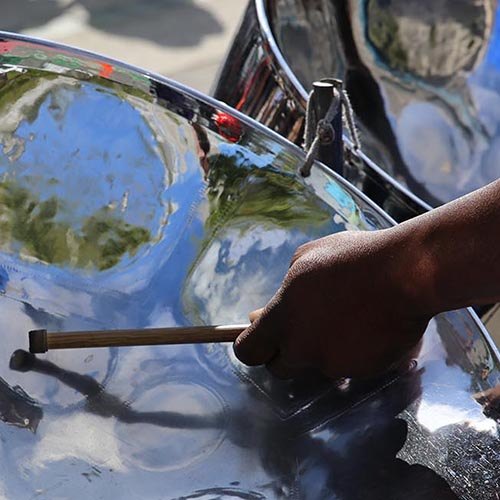Origins Of The Steelpan
![]()
As steel charged into the 20th century with a flood of new uses due to more efficient production methods, a rather unexpected invention emerged as a result – the steelpan.
The steelpan is the correct term for what is often called the steel drum, a musical instrument originating from Trinidad and Tobago. The sound the steelpan produces is so iconic that it is rare to find someone who can’t identify the percussive melodies whenever they ring out. Despite this, how many people actually know the origins of the steelpan?
Believed to originate in the poor suburbs surrounding the Port of Spain in Trinidad, the steelpan was an instrument born of a people’s need for music.
Slaves that had been brought to Trinidad by the French in the late 1700s adapted the French carnivals into their own festivals, fuelled heavily by drums. Following the emancipation of slavery in 1834, these festivals grew into much louder and more colourful affairs, but following some disturbances, the British government in Trinidad decided to outlaw drums in an effort to control the celebrations.
However, the spirit of the music was not broken, and the residents began using simple bamboo sticks to make their music and form what is now known as tamboo bamboo.
When tamboo bamboo was also banned in 1937, the Trinidadians then set their musical sights on scrap metal, and thus the steelpan began to thrive, beginning its journey to becoming the instrument we know today.
The steelpan’s uniqueness is perhaps born from the fact that it is an instrument developed not only from defiance and love for music, but also from what was essentially industrial waste. Much removed from the purpose-built shiny creations you might find today, the original steelpans were made out of things like oil drums, dustbins, coffee tins, car parts and (funnily enough) steel pans! There was no order to the steelpan, and only one rule – if it sounds good, play it!
It’s hard to imagine an instrument with a more organic development than with the steelpan. As the popularity of the sound grew (especially with the help of the US Navy during World War II), people began to experiment with hammering and shaping their scrap-made instruments, forming a range of surface sections to produce different notes – honing and refining the sound produced.
Despite the advancements in design and sound over recent years, the steelpan still remains to be a very simple instrument. Simple in design as it may be, there can be no doubt that hearing the intoxicating beat of a steel band can make even the shyest among us want to hit the dance floor.
So next time you hear the festive, tropical sounds of the steel drum, take a moment to appreciate the unwavering devotion music of the men and women that birthed the sound of the steelpan.
-
Posted by Oli Rudling
1st May 2017

